Keeping your family and property safe is very important. With safety concerns on the rise, it’s key to find the right security measures.
Looking for home security solutions near me can give you peace of mind. It can also keep away possible dangers. Knowing what you need in your area helps you protect your home and loved ones better.
When you look for options, think about custom security plans. These plans should fit your unique needs and situation.
Key Takeaways
- Understanding local security needs is key for good protection.
- Custom security solutions can meet your specific needs.
- Local security steps can make you feel safer.
- Making smart choices is important for protecting your property.
- Good security solutions can keep threats away.
Understanding the Importance of Home Security
In today’s world, home security is a must. It’s not just about protecting your home. It’s about keeping your family safe and creating a secure space.
Current Crime Statistics in the United States
Crime rates in the U.S. are rising. This makes a strong home security system essential. It’s about keeping your property and loved ones safe.
Regional Crime Trends and Patterns
Crime trends vary by region. Some areas see more burglaries and theft. Knowing these trends helps homeowners choose the right security.
Property Crime vs. Violent Crime Statistics
Most crimes are property-related, like burglary and theft. Violent crimes are less common but more damaging. Effective home security monitoring can prevent both.
The Psychological Impact of Home Security
A home security system does more than protect your home. It gives you peace of mind. Knowing your home is safe reduces stress and boosts well-being.
Security experts say, “
A secure home is a foundation for a happy and healthy family life.
” This shows how important a reliable security system is for your mental health.
Financial Benefits of Home Security Systems
Home security systems also save you money. Insurance companies often give discounts for homes with security systems. They see these homes as safer.
Also, a secure home can increase its value. This makes it more appealing to buyers if you decide to sell. Home security’s value goes beyond just safety.
Assessing Your Home’s Security Vulnerabilities

Understanding your home’s security weaknesses is the first step to better protection. A detailed assessment finds entry points and areas needing improvement. This lets homeowners make smart security choices.
Common Entry Points for Intruders
Intruders seek the easiest entry points. Doors and windows are usually the most vulnerable. Keeping these secure is key.
Doors and Windows Assessment
Check doors and windows for damage or weakness. Look for strong frames and secure locks. Smart locks add extra security.
Garage and Basement Security Concerns
The garage and basement are often ignored but pose big security risks. Make sure garage doors are closed and locked. Use a garage door opener with a rolling code. Basements need secure windows and doors, with possible reinforcement.
Conducting a DIY Home Security Audit
A DIY audit involves checking your home’s exterior and interior for weaknesses. Start by walking around to spot entry points and assess security. Use a checklist for thoroughness.
Professional Security Assessments
For a detailed check, hire local home security providers for professional assessments. They find hidden vulnerabilities and suggest security steps. This includes home security installation services for your home’s needs.
By checking your home’s security and acting on it, you can greatly improve your home’s safety. This protects your property and loved ones.
Types of Home Security Systems Available Today

Home security has evolved, and there’s no one-size-fits-all solution anymore. Today, homeowners can pick from a wide range of systems. These systems not only protect their homes but also work well with smart home devices.
Monitored vs. Unmonitored Systems
Home security systems fall into two main categories: monitored and unmonitored. Monitored systems connect to a security company’s center. They alert authorities in emergencies and often come with a monthly fee. Unmonitored systems sound alarms or send alerts to devices but don’t call the police automatically. Your choice depends on your security needs and budget.
Wired vs. Wireless Security Systems
The choice between wired and wireless security systems depends on several factors. Wired systems are reliable but harder to install, mainly in big homes. Wireless systems, like those on best wireless home security systems lists, are easier to install but might face interference.
Smart Home Security Integration
Smart home technology has greatly improved home security. It lets homeowners control their systems remotely, get alerts, and watch their homes through cameras. This integration makes security systems more functional and convenient.
Video Surveillance Options
Video surveillance is key in modern home security. It deters intruders and provides evidence in case of a breach. It’s important to consider both indoor and outdoor camera placements.
Indoor Camera Placement Strategies
For indoor cameras, place them at entry points and common areas. This helps monitor who comes and goes.
Outdoor Camera Considerations
Outdoor cameras need to be weather-resistant and capture clear images of intruders. Position them around doors, windows, and any blind spots.
Finding the Best Home Security in My Area

Finding the best home security in your area means looking at different local providers. There are many choices, so it’s important to find the right one for you. This involves a careful search to find the best fit.
Researching Local Security Providers
To begin, research local home security providers in your area. Look for companies that offer security services like installation, monitoring, and maintenance. Start by searching online for “home security in my area” or “local home security providers” to find companies.
A great place to start your research is https://www.safehome.org/security-systems/best/. It lists top-rated security companies.
Reading Customer Reviews and Testimonials
After finding possible providers, read customer reviews and testimonials. This helps understand the service quality, reliability, and customer happiness. Look for reviews on independent sites for honest feedback.
“The best security system is one that is reliable, easy to use, and provides complete protection. Our customers love our quick service and advanced equipment.” –
Comparing Response Times and Services
It’s important to compare response times and services of different providers. Quick response times are key in emergencies. Make a table to compare these aspects of different providers.
| Provider | Response Time | Services Offered |
|---|---|---|
| ADT Security | Under 1 minute | Monitoring, Installation, Maintenance |
| SimpliSafe | Under 30 seconds | Monitoring, DIY Installation |
| Vivint Smart Home | Under 1 minute | Monitoring, Installation, Smart Home Integration |
By following these steps, you can find the best home security in your area. It should meet your needs and give you peace of mind.
Top-Rated National Home Security Companies Serving Local Areas

Homeowners looking for reliable security have several top choices. These companies offer a variety of services and technologies to protect homes nationwide.
ADT Security Services
ADT is a well-known name in home security. With years of experience, ADT provides complete security solutions for homes.
Service Coverage and Response Times
ADT offers 24/7 monitoring services with fast response times. Their wide network means help is always ready, wherever you are. ADT claims to respond in under 30 seconds in emergencies.
Equipment and Technology Offered
ADT has a range of equipment and technology, like smart home devices and video surveillance. Their systems are easy to use and effective, working with many smart home platforms. As Safe Home Security Inc. points out, “ADT’s advanced technology boosts home security.”
SimpliSafe Home Security
SimpliSafe is known for its DIY setup and easy-to-use interface. It offers flexible plans and various equipment, making it a favorite among homeowners. “SimpliSafe’s flexibility is a big plus,” say many customers.
Vivint Smart Home
Vivint leads in smart home technology, providing integrated security solutions. Their services include home automation and energy management, for a complete security approach. Vivint’s systems are customizable, allowing homeowners to tailor their security to their needs.
Ring Alarm Security System
Ring is a well-known brand for affordable, innovative security solutions. Their systems are easy to install and work well with other Ring devices. Ring focuses on video security and smart alerts, making it a top choice for modern security. For more on security systems, check out Solarkiit’s security systems page.
Local Home Security Providers: Benefits and Considerations
Choosing a local home security provider can greatly improve your home’s safety. Local companies offer many benefits that can make your home safer and give you peace of mind.
Advantages of Choosing Local Companies
Local home security providers offer personalized service that big companies can’t match. They know the security needs of your area well. This means they can create security plans that really work for you.
Key benefits of local providers include:
- Personalized customer service
- Knowledge of local crime trends
- Customized security solutions
- Faster response times
Questions to Ask Local Security Providers
When picking a local home security provider, ask the right questions. This ensures you get the best service for your needs. Ask about their experience, the technology they use, and their monitoring services.
| Question | Importance |
|---|---|
| What experience do you have in home security? | High |
| What kind of security systems do you offer? | High |
| Do you offer 24/7 monitoring services? | High |
| Can you provide references or testimonials? | Medium |
Building Long-Term Security Relationships
Having a long-term relationship with your local home security provider can lead to better service. Regularly check with your provider to make sure your security system is up to date.
Understanding the benefits and considerations of local home security providers helps homeowners make smart choices. Whether you need affordable home security options or full security solutions, local providers can offer the expertise and personal service to protect your home well.
Installation Process and Best Practices

To make sure your home security system works right, it needs to be installed correctly. Whether you’re setting it up yourself or getting help from pros, knowing how it’s done is important. It helps you make smart choices and steer clear of problems.
DIY Installation Steps and Tips
If you’re doing it yourself, plan carefully. First, read the instructions from the maker and get what the system needs.
Tools and Preparation Required
Before you start, get all the tools and parts you need. This includes screws, drills, and mounting brackets. Know the system’s layout and where you need to cover in your home.
Common Installation Mistakes to Avoid
Don’t make the mistake of bad sensor placement or not testing enough. Check all connections well and test each part before you finish. For more help, check out this article on DIY home alarm systems.
What to Expect from Professional Installation
If you choose to get professionals to install it, they’ll check your home’s security needs. They’ll figure out the best spots for sensors, cameras, and more. Companies like ADT Home Security do a full check and offer custom solutions.
Post-Installation Testing and Verification
After it’s installed, test it all to make sure it works. Check sensors, alarms, and monitoring links. Make sure it reacts right to things like doors opening or motion. Testing often helps find problems early, keeping your home safe.
Advanced Home Security Technology Worth Considering
Home security is changing fast with new technologies. These advancements offer better protection and peace of mind. It’s key to look into the latest security features for our homes.
Facial Recognition and AI-Powered Systems
Facial recognition technology and AI-powered systems are big steps forward. They can spot known people, alerting us to visitors or intruders. These systems get better over time, thanks to AI, reducing false alarms.
Learn more about AI in home security at home security resources.
Environmental Monitoring
Advanced systems now watch for more than just intruders. They can detect fires, carbon monoxide leaks, and floods. This means homeowners get alerts fast, helping them act quickly to keep their homes and families safe.
Remote Access and Control Features
Remote access and control are key today. Homeowners can check on their homes from anywhere, getting alerts and controlling their security setup. This makes security better and life easier.
Integration with Voice Assistants
Linking home security with voice assistants like Amazon Alexa or Google Assistant is a big leap. It lets us control our security with our voices. This makes using our security systems simpler and more effective.
In summary, new tech like facial recognition, environmental monitoring, remote access, and voice assistants are changing home security. By using these innovations, we can make our homes safer and more functional, creating a better living space.
Affordable Home Security Options for Every Budget
Securing your home doesn’t have to be expensive. There are many affordable home security options. Homeowners can find systems that fit their budget and security needs.
Entry-Level Security Solutions
For those on a tight budget, entry-level security solutions are a good start. These systems have basic features like door and window sensors. Brands like SimpliSafe and Ring offer easy-to-install solutions.
Mid-Range Security Packages
Mid-range security packages offer more features than entry-level systems. They include additional sensors and cameras. Companies like ADT and Vivint provide these packages with smart home integration.
Premium Security Systems and Their Value
Premium security systems have advanced features like AI-powered monitoring and high-definition cameras. They are more expensive but offer maximum security. Homeowners get benefits like 24/7 monitoring and advanced alerts.
| Security System | Price Range | Key Features |
|---|---|---|
| SimpliSafe | $229 – $329 | DIY installation, basic sensors, optional monitoring |
| Ring Alarm | $199 – $299 | DIY installation, customizable, integrates with Ring cameras |
| Vivint Smart Home | $599 – $1,499 | Professional installation, advanced smart home features, 24/7 monitoring |
“A home security system is not just about protecting your home; it’s about giving you peace of mind.”
In conclusion, there are affordable home security options for every budget. Understanding the different tiers helps homeowners make informed choices that meet their needs and budget.
Maintaining Your Home Security System
Keeping your home safe is more than just setting up a security system. It’s about regular upkeep and updates. A well-kept system keeps your home and family safe from dangers. Regular checks and updates make your security system work better and last longer.
Regular Testing and Maintenance Schedule
It’s key to test and maintain your home security system regularly. Test your alarm weekly and check sensors and cameras monthly. For more tips, check out security system maintenance resources.
Battery Replacement and System Updates
Replacing batteries is a big part of keeping your system running. You should check batteries every 6-12 months. Also, updating your system’s software is important for new security features and fixes. You can also link your system with smart home devices for better control, as home security companies suggest.
When to Upgrade Your Security Equipment
Knowing when to update your security gear is important. If your system is more than 5-7 years old or keeps breaking down, it’s time for a new one. New systems have cool features like facial recognition and AI monitoring, making your home safer.
| Upgrade Reason | Old System Limitation | New System Benefit |
|---|---|---|
| Outdated Technology | Lack of smart features | Integration with smart home devices |
| Frequent Malfunctions | Poor reliability | Enhanced reliability and performance |
| Security Enhancements | Limited security features | Advanced security features like facial recognition |
Emergency Response Protocols and Monitoring
A good emergency response plan is key to home security. It makes sure the right actions are taken fast when there’s a security issue. This part talks about the importance of emergency plans and watching over your home.
Understanding Alert Verification Processes
Checking if an alert is real is very important. Monitored systems use ways like talking back and forth and video to check. For example, if an alarm goes off, the team might call you to see if it’s a real problem.
If you don’t answer or it looks suspicious, the police will be sent. To find out more about the best alarm systems, visit top-rated alarm systems.
Police and Emergency Services Coordination
Working well with police and emergency teams is key. Security companies team up with local law enforcement to respond fast and right. They share important details about the emergency to send the right help.
Some security providers also train their team to handle different emergencies well.
Reducing False Alarms
False alarms waste money and can make responders less alert. To cut down on false alarms, systems use smart features. These include better motion detectors and software that checks sensor data.
Homeowners can also help by making sure their system is set up right and telling their provider about pets. This helps avoid false alarms.
Beyond Alarms: Home Protection Strategies
A good home security plan is more than alarms. It includes physical barriers, new tech, and working together with the community. This creates a strong defense against threats.
Landscaping for Security
Landscaping can help or hurt your home’s safety. Keeping your yard clear can scare off intruders. But, a messy yard can hide burglars. Here are some tips to make your yard safer:
- Keep shrubs and trees trimmed, around windows and doors.
- Avoid dense shrubs near doors.
- Use outdoor lights to brighten dark spots and scare off intruders.
Lighting Strategies to Deter Intruders
Good lighting can keep intruders away. It makes your home visible and less tempting. Here’s how to light up your home:
- Put motion-sensitive lights where they count.
- Choose LED lights for their energy savings and long life.
- Make sure lights don’t blind neighbors or passersby.
Community-Based Security Initiatives
Working together makes neighborhoods safer. Homeowners can improve security by joining forces.
Neighborhood Watch Programs
Neighborhood watch programs have locals watch each other’s homes. They report any odd behavior to the police. This builds community trust and helps prevent crime.
Community Security Apps and Tools
Apps and tools help neighbors share info and act fast. They can report suspicious activity and discuss safety. For more on home security, check out https://www.security.org/home-security-systems/best/ for top picks.
Conclusion: Creating Your Personalized Home Security Plan
Creating a personalized home security plan is key to keeping your home and family safe. It’s important to know your home’s weak spots and the different security systems out there. This way, you can choose the best options to protect your valuables.
A good home security plan should mix different security steps. This includes burglar alarms, CCTV cameras, and systems to control who enters. Adding smart tech for remote monitoring is a smart move. Companies like ADT provide a variety of security options, including fire alarms and 24/7 monitoring.
To create your own security plan, first figure out what your home needs. Think about your home’s size, how many doors and windows it has, and how much you can spend. Also, don’t forget to check and maintain your security system regularly.
By following these steps and getting a custom security plan, you’ll feel safer knowing your home and family are protected. A well-thought-out security plan is a smart investment in your family’s safety.




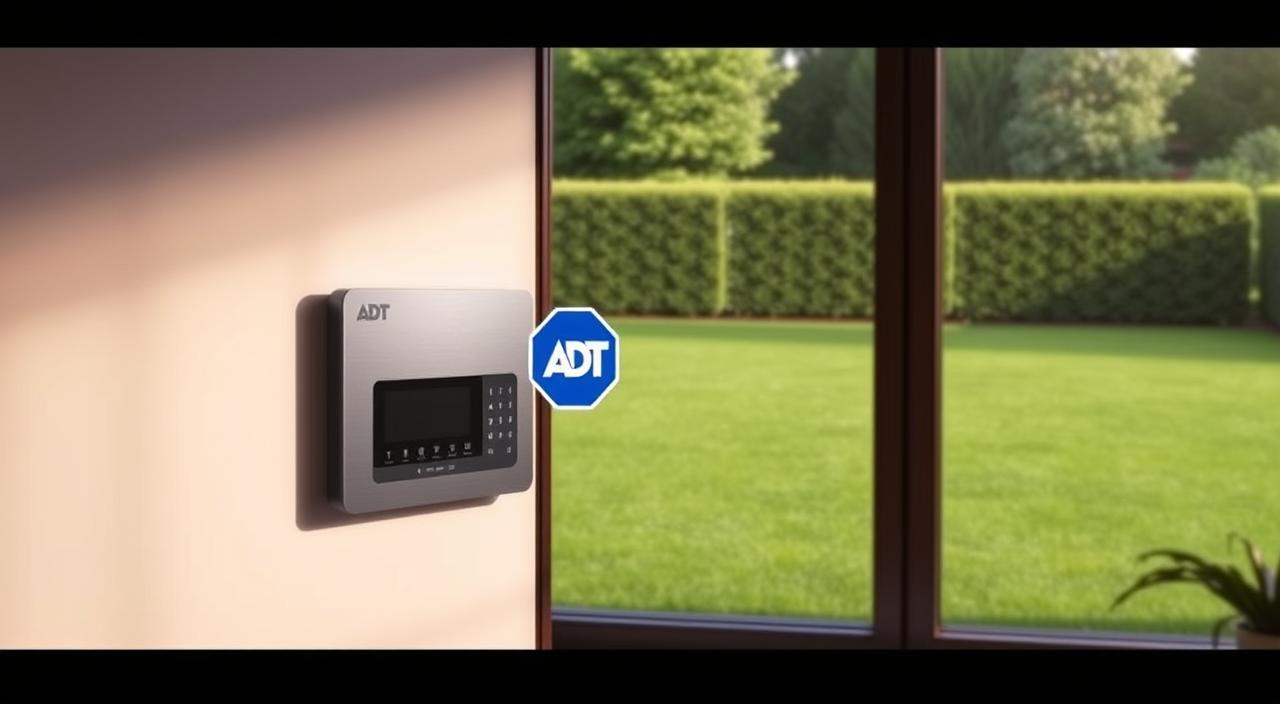
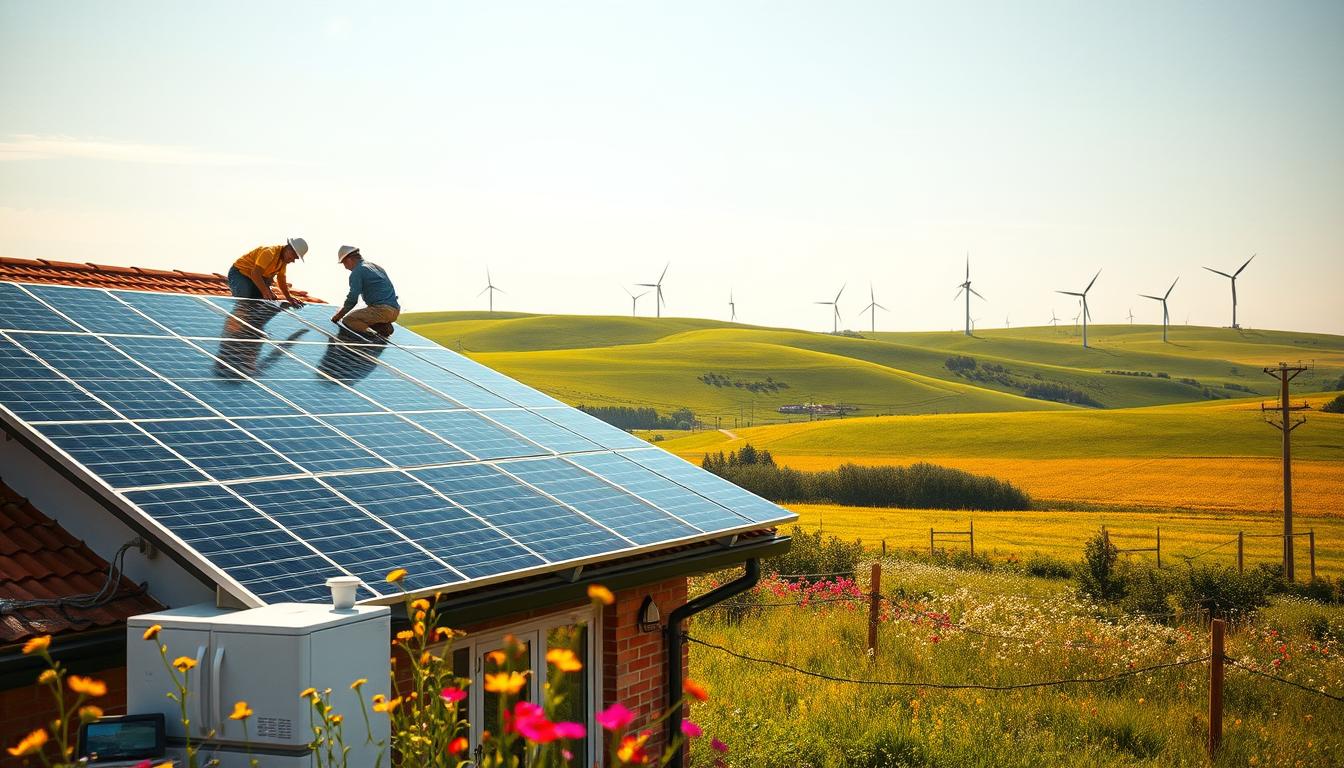

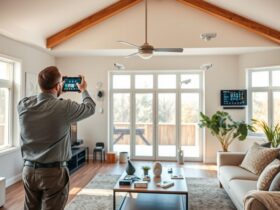
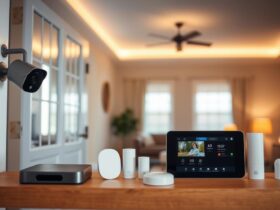
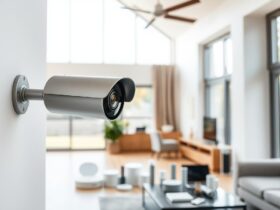
Leave a Reply